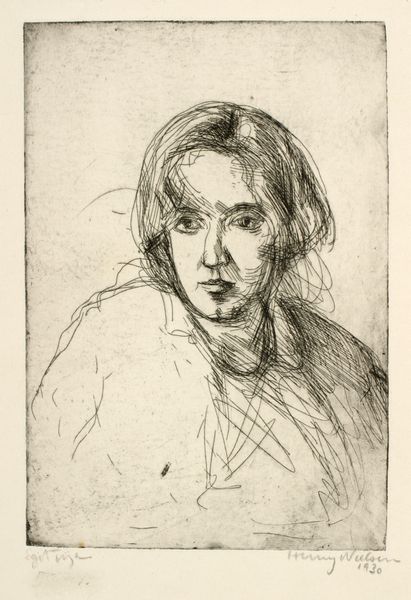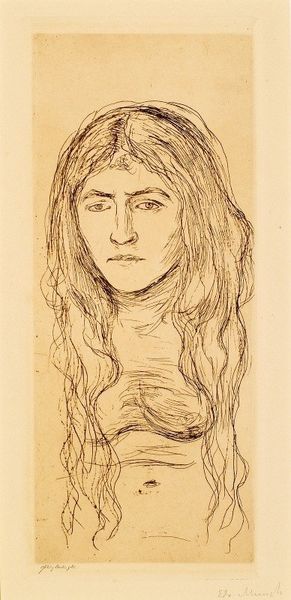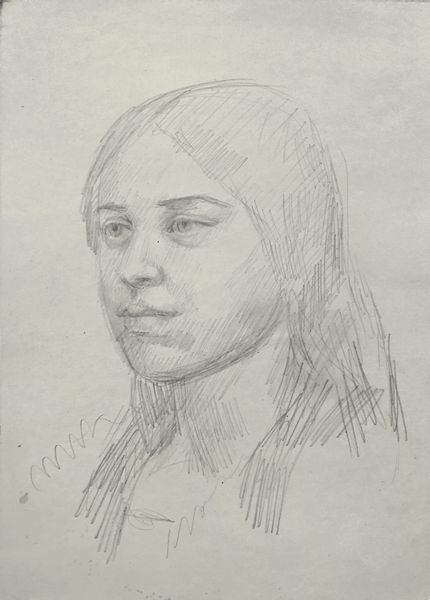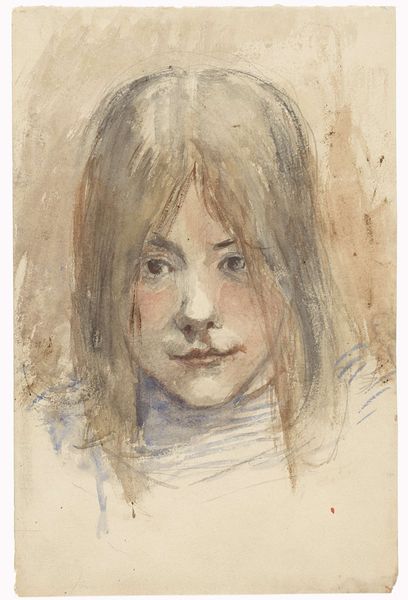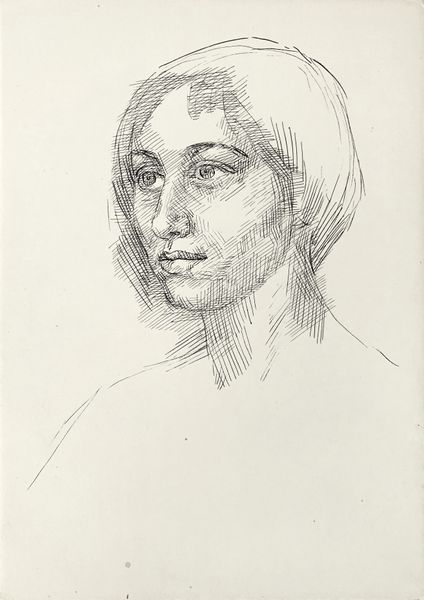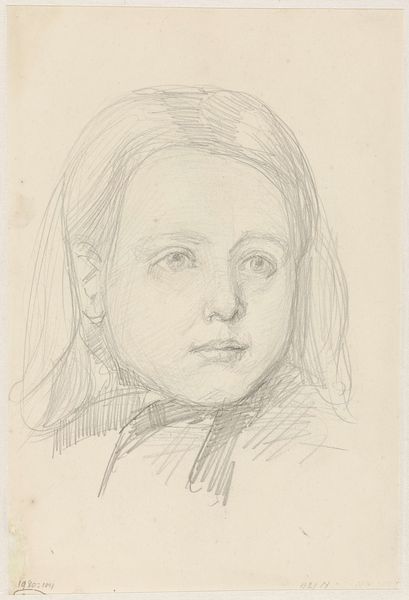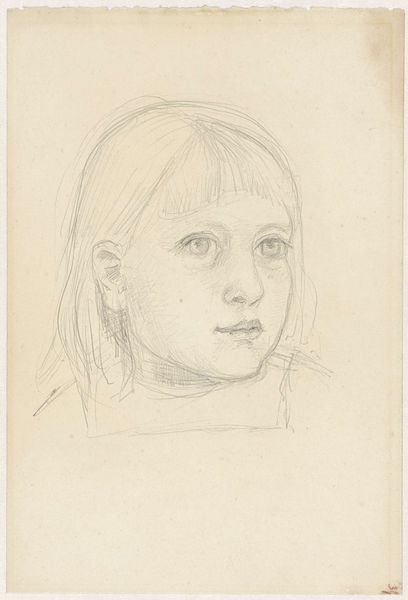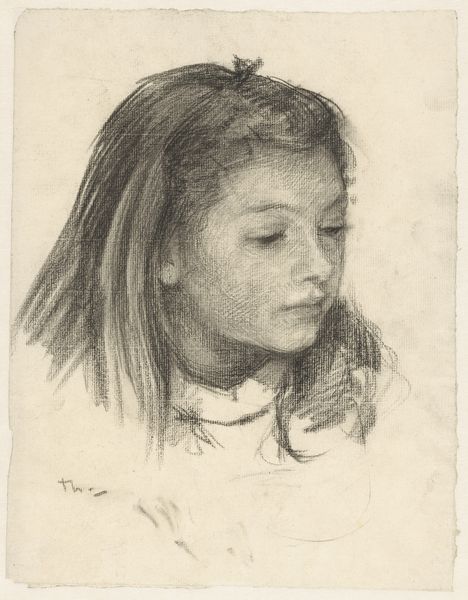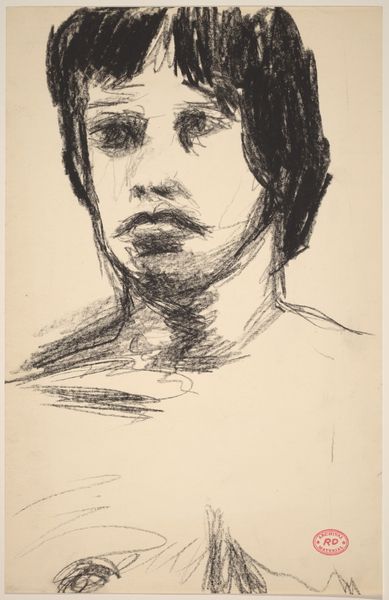
drawing, pencil
#
portrait
#
drawing
#
figuration
#
pencil drawing
#
pencil
#
portrait drawing
#
realism
Dimensions: height 250 mm, width 162 mm
Copyright: Rijks Museum: Open Domain
Curator: This is a pencil drawing titled "Portret van een meisje met los haar," or "Portrait of a Girl with Loose Hair," by Jozef Israëls, an artist active from 1834 to 1911. The work resides here at the Rijksmuseum. Editor: There's a haunting quality to it, isn't there? A delicacy too, but mostly I'm struck by the melancholy in her gaze. The loose strokes give a sense of vulnerability, almost like catching a private moment. Curator: Israëls came from a family with Jewish-Dutch roots; this background likely played a part in how he chose subjects, which were often domestic and working-class figures. What you’re picking up is very likely a reflection of the socio-economic realities in the Netherlands at the time. Editor: Right, it's impossible to divorce art from its context. The looseness of the lines also speaks to the artistic conventions shifting towards impressionistic rendering of subjects, departing from earlier emphasis on exact detail, even in portraiture. Do you agree? Curator: Absolutely. Israëls moved from very detailed historical pieces to portrayals that explored light and emotion—themes prevalent within the Hague School of painting. Editor: You can see that struggle in this piece – not necessarily struggle of subject of the work, but with Israëls' exploration of shifting ideas within artistic trends. Is there other information on the family relationships for this particular work? Knowing her relation to the artist, as his daughter, for instance, could deeply change my reading of it. Curator: Little is known about the subject’s exact relation to the artist. However, this work, though seemingly casual, fits neatly within nineteenth-century art market demands for portraits but shifts slightly by intimating personal connection and psychological depth within sitter. Editor: It makes me question representation itself: who gets seen and how are they framed, and who benefits? Even within realism, we can unpack complex social dynamics. Still, though the context certainly influences the piece, I find myself returning to that poignant look in her eye, the human connection, beyond the technical skill of representation or its socioeconomic context. Curator: It's precisely that tension – the individual and the societal forces shaping them – that makes Israëls such a compelling figure, doesn't it? A negotiation of the social role of art. Editor: Indeed. Hopefully this offers a fuller view of a drawing on a surface level presents such an apparently innocent portrait.
Comments
No comments
Be the first to comment and join the conversation on the ultimate creative platform.
